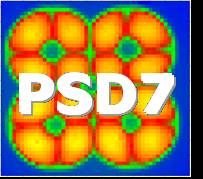Speaker
Mr
Mohammed Alnafea
(University of Surrey)
Description
The incident of breast cancer is increasing and thus requires a
powerful diagnostic technique for early detection. X-ray mammography
(as screening and diagnostic tool) is claimed to be the golden
standard in breast tumour imaging. However, mammographic findings
are, non-specific in many cases, and adjunctive methods such as
nuclear medicine techniques are needed. Planar scintimammography
(SM) as an adjunct to mammography has been gaining significant
attention. However, when undertaken with a conventional parallel-
hole collimator has difficulty detecting tumours that are less than
1cm in diameter. In addition, such camera utilises a very small
fraction of the total number of the emitted photons: this limit both
the quality and the diagnostic value of the observed images, whereby
spatial resolution and sensitivity trade off against each other.
Moreover, imaging with standard gamma camera might cause problems
gaining close proximity to the breast. As an alternative approach,
we focus our attention on the applications of Modified Uniformly
Redundant Arrays (MURAs) [1] Coded Aperture (CA) methods with
dedicated high resolution gamma camera instrumentation without
collimator for use in SM. Such CA pattern has an open area of up to
50%, thus making good use of the emitted photons, as well as
exhibiting potentially significant sensitivity improvements. Thus,
with enough photon statistics CA imaging might match the imaging
objectives in SM: early detection of malignant disease.
The purpose of this study is to investigate and evaluate dedicated
gamma camera breast tumour imaging with MURAs CA systems using a
well established Monte Carlo simulation method. MCNPX code is used
that has many capabilities and provide detailed physics simulation
within the photon range encountered in nuclear medicine imaging. In
addition, it does however model Compton scatter, X-ray fluorescence
as well as photon penetration of the gamma camera collimator. We
considered only 99mTc isotropic sources emitting 140 keV photons to
perform a complete simulation. The simulation consists of tracing
the path of gamma photons through tissue equivalent scattering
material, through the CA and until detected in the scintillation
crystal. We also simulate the statistical uncertainty in position
read out and the statistical charge variation caused by
photoelectron variation in the photomultiplier tube array. Thus, all
the major physics aspects of the imaging system are considered. A
full camera validation is currently under investigation.
The Monte Carlo Simulation model is based on a simple 3D block
phantom containing breast and variable legion sizes (5, 10, 20 mm
diameter). The breast is schematized as a parallelepiped (of 6 x 6 x
6 cm3) a breast thickness of 6cm was chosen based on the assumption
of light breast compression to emulate SM and to increases the
lesion detectability. The lesions were always positioned at 3cm
depth from the surface of the breast, as point-like sources (lesions
represented as spheres) with or without background activity assigned
to the surrounding media. The effectiveness and performance of CA SM
will be evaluated by quantitative comparison of three fundamental
parameters: breast tumour sensitivity, lesion detection (the
contrast) and FWHM under a variety of clinical imaging situations.
Although this work is primarily aimed at breast tumour imaging,
other applications with similar levels of photon statistics may also
benefit from such an approach e.g., small animal imaging and
clinical paediatric imaging.
References
[1] E.E. Fenimore and T. M. Cannon. (. Applied Optics, 17(3):337-
347, 1978
[2] J.C. Yanch, A.B. Dobrzeniecki, et al. Phys. Med. Biol. vol. 37,
no. 4, pp. 853-870, 1992.
Primary author
Mr
Mohammed Alnafea
(University of Surrey)




